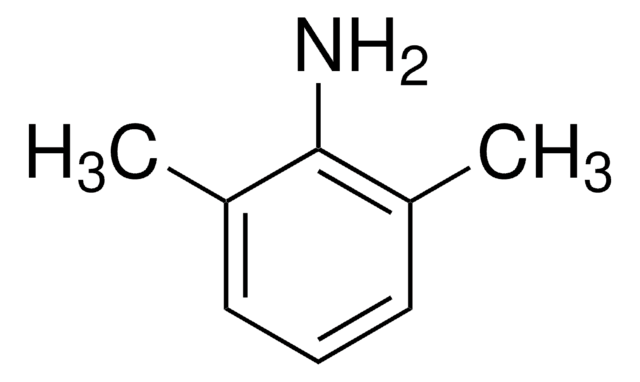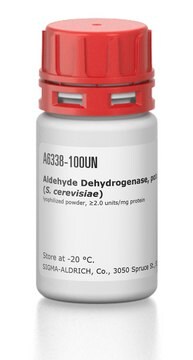おすすめの製品
グレード
analytical standard
品質水準
蒸気圧
<0.01 mmHg ( 20 °C)
製品種目
PESTANAL®
アッセイ
~99%
シェルフライフ
limited shelf life, expiry date on the label
テクニック
HPLC: suitable
gas chromatography (GC): suitable
屈折率
n20/D 1.560 (lit.)
bp
214 °C/739 mmHg (lit.)
mp
10-12 °C (lit.)
密度
0.984 g/mL at 25 °C (lit.)
アプリケーション
agriculture
cleaning products
cosmetics
environmental
food and beverages
personal care
フォーマット
neat
SMILES記法
Cc1cccc(C)c1N
InChI
1S/C8H11N/c1-6-4-3-5-7(2)8(6)9/h3-5H,9H2,1-2H3
InChI Key
UFFBMTHBGFGIHF-UHFFFAOYSA-N
類似した製品をお探しですか? 訪問 製品比較ガイド
法的情報
シグナルワード
Warning
危険有害性の分類
Acute Tox. 4 Dermal - Acute Tox. 4 Inhalation - Acute Tox. 4 Oral - Aquatic Chronic 2 - Carc. 2 - Eye Irrit. 2 - Skin Irrit. 2 - STOT SE 3
ターゲットの組織
Respiratory system
保管分類コード
6.1A - Combustible acute toxic Cat. 1 and 2 / very toxic hazardous materials
WGK
WGK 3
引火点(°F)
195.8 °F - closed cup
引火点(℃)
91 °C - closed cup
個人用保護具 (PPE)
Eyeshields, Faceshields, Gloves, type ABEK (EN14387) respirator filter
適用法令
試験研究用途を考慮した関連法令を主に挙げております。化学物質以外については、一部の情報のみ提供しています。 製品を安全かつ合法的に使用することは、使用者の義務です。最新情報により修正される場合があります。WEBの反映には時間を要することがあるため、適宜SDSをご参照ください。
消防法
第4類:引火性液体
第三石油類
危険等級III
非水溶性液体
労働安全衛生法名称等を表示すべき危険物及び有害物
名称等を表示すべき危険物及び有害物
労働安全衛生法名称等を通知すべき危険物及び有害物
名称等を通知すべき危険物及び有害物
Jan Code
36766-250MG-R:
36766-1G-R:
36766-250MGR:
36766-BULK-R:
36766-VAR-R:
試験成績書(COA)
製品のロット番号・バッチ番号を入力して、試験成績書(COA) を検索できます。ロット番号・バッチ番号は、製品ラベルに「Lot」または「Batch」に続いて記載されています。
この製品を見ている人はこちらもチェック
プロトコル
GC Analysis of Anilines on Equity®-5
ライフサイエンス、有機合成、材料科学、クロマトグラフィー、分析など、あらゆる分野の研究に経験のあるメンバーがおります。.
製品に関するお問い合わせはこちら(テクニカルサービス)













